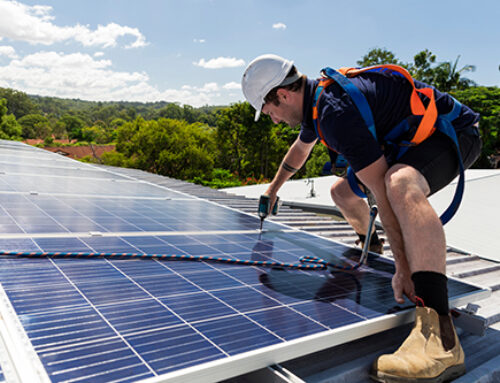The transition to electric vehicles (EVs) is a crucial step towards a more sustainable future. However, the current lithium-ion batteries that power these vehicles come with significant limitations. They are expensive, environmentally damaging, and reliant on a relatively scarce resource. To address these challenges, researchers at the Technical University of Denmark (DTU) have developed a groundbreaking solution: a next-generation super battery made from rock.
A revolutionary innovation
Led by researcher Mohamad Khoshkalam, the DTU team has invented a solid-state battery based on potassium and sodium silicates. These materials, commonly found in the Earth’s crust, offer a promising alternative to lithium. The milky-white, paper-thin material is inexpensive, eco-friendly, and can be produced from silicates, which cover over 90% of the Earth’s surface. This innovation marks a significant leap forward in battery technology, addressing both the environmental and economic drawbacks of lithium-ion batteries.
Eco-friendly and cost-effective
The new battery material is not only abundant but also easier and safer to produce. Unlike lithium, which requires complex and environmentally harmful extraction processes, potassium and sodium silicates can be sourced more sustainably. Additionally, the production process for these batteries can occur in an open atmosphere and at temperatures close to room temperature, reducing both costs and energy consumption. This makes scaling up production more feasible and less impactful on the environment.
Moreover, the new material does not require the addition of expensive and harmful metals such as cobalt, which are currently used in lithium-ion batteries to enhance capacity and lifespan. This reduction in costly components further decreases the overall production cost, making EVs more affordable for consumers.
The science behind the innovation
The electrolyte is a critical component of any battery, allowing ions to move between the anode and cathode, thus generating the electrical current necessary for charging and discharging. In traditional lithium-ion batteries, this electrolyte is typically a liquid. However, the new battery uses a solid-state electrolyte, where ions travel through a solid material. This has several advantages: the ions can move faster, the battery is more efficient and quicker to charge, and it is safer, as it eliminates the risk of leaks and fires associated with liquid electrolytes.
Despite these benefits, developing solid-state batteries comes with its own set of challenges. The technology works well in laboratory settings, but scaling up for commercial production is complex and costly. The ultra-thin layers of materials used in these batteries must be pressed together at high pressure, a process that is difficult to replicate on a large scale.
Looking to the future
While the road to commercialisation is still long, the potential impact of this new battery technology is immense. Khoshkalam and his team are optimistic, having already secured a patent for their discovery and established the start-up K-Ion to further develop the technology. Supported by DTU’s Earthbound initiative, K-Ion aims to bring this innovation from the laboratory to the market.
The next step for Khoshkalam and his team is to create a demo battery to demonstrate the viability of their material to companies and potential investors. They expect to have a prototype ready within one to two years. If successful, this technology could significantly extend the driving range of EVs, with projections of up to 1000 kilometres on a single 10-minute charge, making EVs more practical and appealing to a broader audience.
Both researchers and car manufacturers see solid-state batteries as the future of EV technology. However, the current technology readiness level (TRL) of potassium and sodium silicate-based batteries is still low. It may take up to ten years before we see these batteries in commercial EVs, as there are numerous technical hurdles to overcome. The journey from lab discovery to market-ready product is fraught with risks, but the potential rewards make it a worthy endeavour.
The development of a rock-based super battery represents a significant advancement in battery technology. It promises to make electric vehicles more efficient, affordable, and environmentally friendly. As researchers and innovators like Khoshkalam continue to push the boundaries of what is possible, the dream of a sustainable, electric future becomes ever more attainable. The journey is challenging, but the potential benefits for our planet and future generations make it an essential pursuit.




